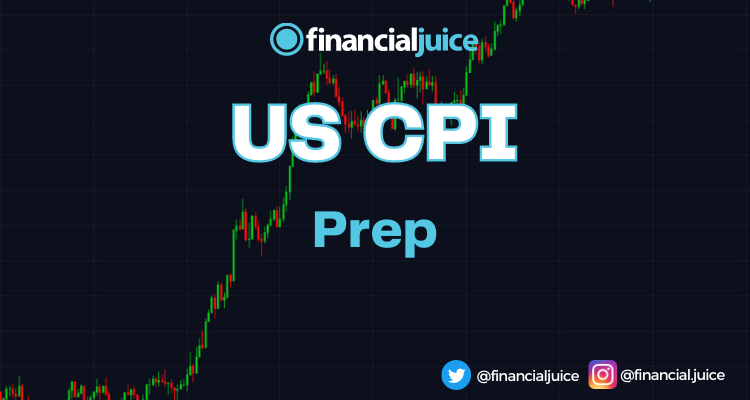On Thursday the 11th of January, the BLS is set to release the latest US inflation print, representing the month of December.
Here are some views on what to expect.
For CPI YoY, the median economist's forecast sees it moving up to 3.2% from 3.1% previously. In a survey of 48 economists, the highest estimate is seen at 3.6%, and the lowest at 3.1%.
For CPI MoM, the median forecast is 0.2% on the prior 0.1%. The highest estimate is 0.4%, and the lowest is 0.1%.
Here are some of the views of the largest investment banks.
Wells Fargo
Headline inflation as measured by the Consumer Price Index was tame in October and November, the two most recent data points.
The CPI was unchanged in October and increased just 0.1% in November.
Significant declines in energy commodity prices, such as gasoline, helped to keep headline inflation in check.
Excluding food and energy prices, the core CPI has been increasing at a 0.2%-0.3% monthly pace for the past several months, a slowdown from its pace earlier in the year and in 2022.
On balance, we look for this CPI report to show that inflation continues to slow on trend in a way that positions the FOMC to start cutting rates in June.
We expect a 0.2% increase in headline CPI and a 0.3% increase in the core. Energy prices were more stable last month and are unlikely to repeat the major declines that occurred in October and November.
We expect the disinflation in core goods to continue amid demand normalization, healthier supply chains, and the fall in commodity prices from their peak.
Core services inflation should also slow modestly relative to November, led by softer price increases for primary shelter.

JPMorgan
The progress on inflation since June 2022 has been remarkable.
In that month, not-seasonally-adjusted headline CPI inflation hit 9.1% year-over-year, its highest reading since November 1981.
This 9.1% encompassed increases of 10.4% for food, 41.6% for energy, and 5.9% for everything else.
The reasons for this inflation spike are well known. The pandemic interrupted global supply chains, while fiscal support boosted demand. In addition, Russia’s invasion of Ukraine disrupted global supplies of both food and energy.
Over the past 18 months, all of these impacts have faded so that, by last November, year-over-year headline CPI inflation had fallen to 3.1%, composed of a 2.9% increase in food prices, a 5.4% decline in energy prices, and a 4.0% increase for everything else.
This overall level of CPI inflation translated into 2.6% and 3.2% year-over-year increases in the headline and core consumption deflators, respectively – clearly approaching the Fed’s 2% targets. Still, the path for monetary policy and interest rates this year depends a lot on whether inflation stalls out at its current pace or continues to slide.
BlackRock
The US CPI this week will likely show falling goods prices leading inflation lower in 2024.
We see supply constraints putting inflation on a rollercoaster.
Previous Release
On December 12th 2023 US CPI MoM came in at 0.1% on the forecast 0%. The YoY came in at 3.1%, as expected, lower than the prior 3.2%
This was met by whipsaws across the dollar, US stocks, and bond yields, as it was a mixed bag of data.


